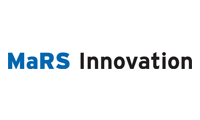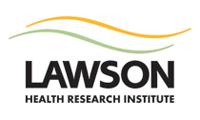Medical Imaging in Canada
In Canada and around the world, diagnostic medical imaging, including magnetic resonance imaging (MRI), computerized tomography (CT), ultrasound and others are used to diagnose disease, plan treatment and monitor patients’ response.
Huge economic potential
The potential for improved health resulting from developments in medical imaging is huge as is its economic potential. The annual global market for diagnostic medical imaging equipment and software is estimated at $32 billion and is growing by seven percent each year.
Canadian academic centres have developed some of the world’s leading imaging research programs; the two largest are located in Toronto and London. Significant public and private investment has led to exciting imaging innovations, many of which have already been licensed or developed through spin-off companies. Despite that, sales of imaging equipment from Canadian companies represent less than one percent of the global market and less than two percent of the American market.
Barriers to Canadian commercialization
While there has been some movement toward commercialization, such as better protection of intellectual property, some key barriers remain that must be overcome if Canada is to benefit economically from the innovations of its imaging researchers and companies.
Among the barriers are:
- Islands of expertise: While individual imaging groups have unique strengths, no one group has all the necessary components to translate research innovations into clinical use. These groups need a mechanism whereby they can work together to build on their individual strengths.
- Imaging facilities: No one imaging group or company has all the resources needed to test and evaluate new imaging innovations. Groups need to pool resources to leverage existing imaging facilities to accelerate the testing and validation of innovations.
- Clinical trials: Clinical trials are needed to establish the value of medical innovations. Designing and running clinical trials, however, requires specific expertise and access to clinical practitioners.
- Pathology validation: Pathology validation is needed before new imaging technologies can be accepted into clinical use, but specialized, non-standard techniques are required to achieve this.
- Regulatory filing: Procedures for approval before a technology can be used in a clinical setting are complex and time consuming. Small companies and research laboratories typically don’t have this expertise.
- Funding for product launch: This can be a major expense for companies and requires specialized skills that can be difficult to find.
- Business executive management: Imaging researchers are successful innovators. However, many of the companies they spin-off to commercialize their research discoveries struggle to advance, in part because of researchers’ lack of management expertise.
- Reimbursement by government: Technological innovation, in order to be used, must be included in government formularies for reimbursement in Canada’s publicly funded healthcare system. Given the number of innovations governments must review and consider each year, achieving reimbursement can be a big challenge.
- Acceptance by practitioners: Even with government reimbursement, practitioners need to know about, recommend, prescribe or requisition new technologies. Getting an innovative technology in front of practitioners for ongoing use requires specialized contacts and marketing acumen.
CIMTEC helping overcome barriers
CIMTEC is well-positioned to help Canada’s medical imaging community overcome these barriers in three ways:
- By providing researchers, startups and small and medium-sized medical imaging companies with critically needed expertise, technical capabilities and infrastructure to help them become internationally competitive.
- By promoting training and investment in imaging technology through the cultivation of new strategic partnerships between the private sector and academic centres.
- By increasing Canadian imaging commercialization and the return on research investment, thus increasing economic growth and the number of high-tech jobs in Canada.








